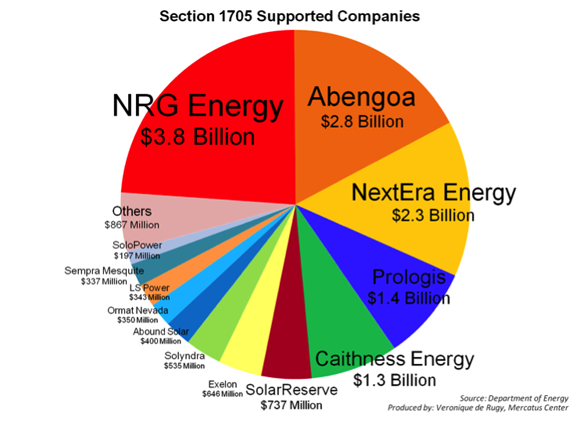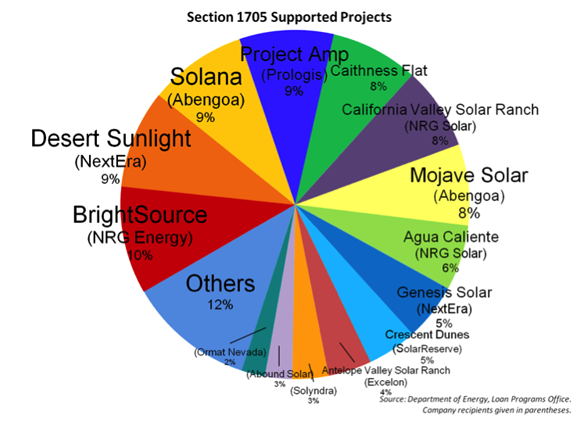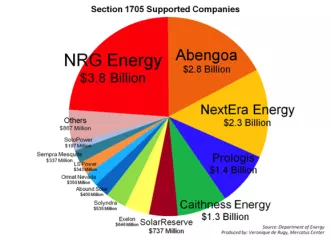- | Government Spending Government Spending
- | Data Visualizations Data Visualizations
- |
Who Benefits from the Department of Energy's Loan Guarantee Program?
Nearly 90 percent of the 1705 loans guaranteed by the federal government since 2009 went to subsidize lower-risk power plants, which in many cases were backed by big companies with vast resources. It’s hard to imagine that these big companies wouldn’t have access to capital if the project were in such high demand.
The failure of energy company Solyndra has focused public attention on the loan guarantee programs of the U.S. Department of Energy (DOE).
This week’s chart provides a breakdown of the U.S. Department of Energy’s three loan programs: Advanced Technology Vehicles Manufacturing (ATVM) Loan Program and the Loan Guarantee programs to include Section 1703 of Title XVII of the Energy Policy Act of 2005 and the Section 1705 Loan Guarantee Program under the American Reinvestment and Recovery Act of 2009 (ARRA).
Since 2009, the DOE has guaranteed $34.7 billion in loans, 46 percent through the 1705 loan program, 30 percent through the 1703 program, and 14 percent through the ATVM loan program. Together these programs claimed to have created some 2,378 permanent jobs, which means that for every $6.7 million in taxpayer exposure, one job was created.
The 1705 loan program (under which Solyndra received funding) deserves particular scrutiny. This program is a product of the economic stimulus bill of 2009. A total of 26 projects were funded under the 1705 program and guaranteed roughly $16 billion.
The recipient of the most 1705 loans was NRG Energy Inc., which received $3.8 billion (23.7 percent of the overall amount guaranteed under the 1705). Overall, just four companies received 64 percent, or $10.3billion, of the total amount guaranteed under the 1705 program.
Nearly 90 percent of the 1705 loans guaranteed by the federal government since 2009 went to subsidize lower-risk power plants, which in many cases were backed by big companies with vast resources. It’s hard to imagine that these big companies wouldn’t have access to capital if the project were in such high demand.
The economic justification for any government-sponsored lending or loan guarantee program must rest on a well-established failure of the private sector to allocate loans efficiently (i.e., deserving recipients could not have obtained capital on their own). Absent such a private-sector deficiency, the DOE’s activities would simply be a subsidy to this sector of the economy that is wasteful at best and politically motivated at worst.
Veronique de Rugy is a senior research fellow at the Mercatus Center at George Mason University.
Source: U.S. Department of Energy’s Loan Programs Office. The two supplemental charts show a further breakdown of 1705 loans by supported projects and companies.





